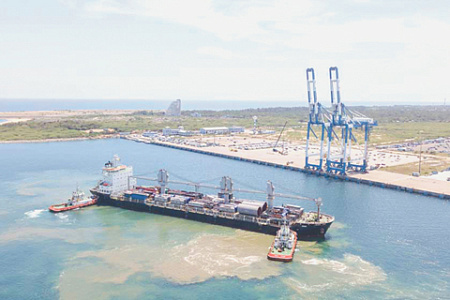
This year should bring record amounts to China from developing countries for loans, British media write, citing Australian analysts. The 75 most vulnerable countries are expected to pay $21.6 billion in 2025. It is more than likely that this will fail and China will be able to receive infrastructure facilities as compensation. However, starting in 2020, the West has fewer and fewer opportunities to offer alternative projects to vulnerable countries.
Poor countries will have to pay about $ 35 billion in 2025, according to analysts at the Australian Lowy Institute. A considerable part of these loans were distributed within the framework of the Belt and Road project. Given that the economic situation of vulnerable countries is very poor, there are doubts that the debts will be paid.
And the majority of the total amount – $21.6 billion – was owed by poor states.
This means that Beijing can request infrastructure facilities instead of paying off debts. The history of the Lankans is significant. In 2017, after Sri Lanka was unable to pay off China, the Celestial Empire leased the deepwater port of Hambantota, an important asset, for 99 years. The Lankans received $1.1 billion for the lease and immediately spent it on paying off debts, though mostly not Chinese, but borrowed from Western countries. Before Beijing, the island of Ceylon remained in debt.
This was a prime example of what can happen if the Chinese are not paid on time. Beijing’s debt practices, called “debt diplomacy,” have been repeatedly criticized not only in the Western, but even in a number of Russian media, including as a warning to Moscow.
However, in the case of the West, attempts to dissuade cooperation with China look somewhat biased, since the United States and European countries have less and less to offer economically less developed partners. Defense spending and comprehensive support for Ukraine are growing, and the COVID-19 pandemic has “eaten up” a significant portion of reserves.
China, despite economic and demographic problems, continues to develop projects around the world, increasing its presence in Africa, Latin America, not to mention Asian countries. Apart from Sri Lanka, Laos and Malaysia remain in a particularly difficult situation.
In Laos, in exchange for unpaid debts for the construction of 20 hydroelectric power plants, the Chinese took control of 90% of the shares of the country’s main energy company, essentially subjugating its energy system. In Malaysia, the Chinese partially control the railways they have built. Pakistan is increasingly dependent on China.
It is worth noting that payments should be reduced by 2027. Australian analysts write that in 2026, poor countries should return $17 billion to China, then the amount will decrease to $14-15 billion. However, all this is relevant if the debts for 2025 are paid in full. And there are big doubts that this will happen.
“Western countries really have nothing to offer right now in order to pull developing countries away from China. Washington and Brussels would like to prevent Beijing, but so far they do not have such opportunities,” said Alexei Portansky, professor at the Faculty of World Economy and World Politics at the National Research University Higher School of Economics and a leading researcher at IMEMO RAS.
At the same time, in a conversation with NG, the expert stressed that the same US President Donald Trump could have saved certain countries from Chinese influence if he had abandoned a policy focused only on the immediate interests of the American budget.
“Given its anti-China policy, the White House could selectively replace Beijing in ensuring development. Now, not everyone is ready to pay off the Celestial Empire. The price for debts may be port facilities or minerals. China can repeat the schemes that it has already used,” says Portansky.
